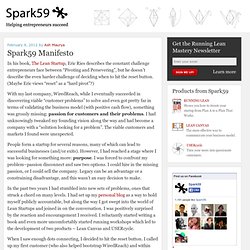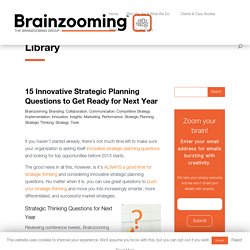

Mapping the customer experience with customer experience journey maps. Understanding the Customer Buying Cycle and Triggers. This article looks at why customers expect different interactions with you depending on where they are in the buying cycle.

It also examines how specific events trigger them into a buying mode. It then explains how you can use this information to make your marketing more effective. The Customer Buying Cycle A simple way to look at the buying cycle is to break into three stages: Awareness – when a customer first becomes aware of your product. How Buying Cycle impacts the sales approach needed Imagine that you wandered in to a clothing store while walking around the neighborhood. Now imagine that you have gone into the same store. What’s the difference?
The difference between these two examples is where you are in the buying cycle. Depending on where you are in your buying cycle, your expectations for how the sales people in the shop should treat you are different. Clock building, not time telling.
Inspiration. Temp. Eric Ries. Steve Blank. Tom Hulme. Why NOT the Funnel Chart? Eric Ries describes the three A’s of metrics as: Actionable, Accessible, and Auditable.

Today, I’d like to share our take on what it means for metrics to be accessible. What Are Accessible Metrics? 1. Everybody can see what’s going on The first part is making the metrics dashboard available to everyone (including advisors/investors). A business should be run as an aquarium where everybody can see what’s going on. 2. This was the challenge I imposed on my team when designing the dashboard for our upcoming USERcycle product which makes heavy use of Dave McClure’s Pirate metrics model. Lets see how we did. The Funnel Chart The obvious starting point was using a funnel chart like the one shown below: The pros of the funnel chart is that it is simple and visual.
Quick: In the figure below, did we make progress in the month of June? You probably had to carefully study the numbers to make that determination because the visualization itself didn’t answer that question. Or proportionally taller: Manifesto. In his book, The Lean Startup, Eric Ries describes the constant challenge entrepreneurs face between “Pivoting and Persevering”, but he doesn’t describe the even harder challenge of deciding when to hit the reset button.

(Maybe Eric views “reset” as a “hard pivot”?) With my last company, WiredReach, while I eventually succeeded in discovering viable “customer problems” to solve and even got pretty far in terms of validating the business model (with positive cash flow), something was grossly missing: passion for customers and their problems. I had unknowingly tweaked my founding vision along the way and had become a company with a “solution looking for a problem”.
The viable customers and markets I found were unexpected. People form a startup for several reasons, many of which can lead to successful businesses (and/or exits). In the past two years I had stumbled into new sets of problems, ones that struck a chord on many levels. Spark59 – A new beginning. Cracking the Innovation Complexity Code. Cracking the complexity code I’d like to explore further why I feel innovation is a complex adaptive system that needs us all to recognize its make up differently than a ‘simple’ idea management system or pipeline process.

It is far more complex than that. Innovation needs to be managed well. There was a good article within the McKinsey Quarterly, published in 2007 entitled “Cracking the complexity code” written by three authors Suzanne Heywood, Jessica Spungin and David Turnbull that leads with “one view of complexity holds that it’s largely a bad thing- that simplification generally creates value by removing unnecessary costs”. Certainly we all yearn for a more simplified life, structure, organization, approach to systems or just reducing complexity in our daily lives to find time for what we view as improving its ‘quality’. Within the article they argue there are two types of complexity- institutional and individual. The other correlations that fits for me We have choices of complexity.
The Silicon Valley Entrepreneur - Getting to Plan B. Reach Your Escape Velocity. 15 Innovative Strategic Planning Questions to Get Ready for 2013. If you haven’t started already, there’s not much time left to make sure your organization is asking itself innovative strategic planning questions and looking for top opportunities before 2013 starts.

The good news in all this, however, is it’s ALWAYS a good time for strategic thinking and considering innovative strategic planning questions. No matter when it is, you can use great questions to push your strategic thinking and move you into increasingly smarter, more differentiated, and successful market strategies. Strategic Thinking Questions for Next Year Reviewing conference tweets, Brainzooming strategic planning engagements, and leftovers in our strategic thinking exercise R&D lab, here are fifteen innovative strategic planning questions (plus a bonus ice breaker question) to move to the top of your strategic planning questions list – whether you’ve started planning or not! Strategy & Purpose Questions Strategic Marketing Questions.